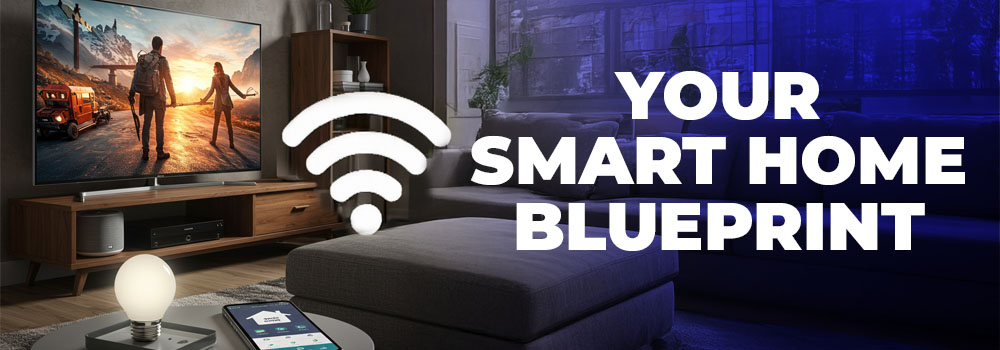Introduction: The Voice Control Revolution
We’re living through a paradigm shift in human-machine interaction. The global smart home market, valued at 101.7billionin2023,isprojectedtoreach101.7billionin2023,isprojectedtoreach380 billion by 2030, with voice control emerging as the dominant interface. But today’s most advanced systems go far beyond simple command recognition – they’re evolving into intuitive partners that understand context, anticipate needs, and adapt to individual lifestyles.
The latest voice control platforms leverage three groundbreaking technologies:
- Context-Aware Processing: Systems now analyze over 200 contextual signals including time of day, location, weather, and even user mood indicators.
- Neural Speech Recognition: Advanced AI models achieve 98% accuracy in natural language understanding across diverse accents and dialects.
- Predictive Personalization: Machine learning algorithms build comprehensive user profiles that enable anticipatory actions before explicit commands are given.
Section 1: The Cutting-Edge Technology Behind Modern Voice Assistants
1.1 The AI Brain: More Than Just Speech Recognition
Today’s voice assistants utilize transformer-based neural networks that process language with near-human comprehension. Key advancements include:
- Multimodal Understanding: Combining voice with visual cues from smart cameras for richer context
- Emotional Intelligence: Detecting stress levels or excitement through vocal biomarkers
- Continuous Learning: Systems that improve their responses through ongoing interaction
- Cross-Device Memory: Maintaining conversation context across multiple smart devices
1.2 Natural Language Processing Breakthroughs
The NLP engines powering modern assistants can:
- Understand complex, multi-part requests (“Order my usual pizza and start my movie playlist”)
- Interpret implied meanings (“It’s getting dark” = turn on lights)
- Handle follow-up questions without repetition
- Learn household-specific terminology and nicknames
1.3 The Privacy Paradox: Secure Yet Powerful
Manufacturers have addressed privacy concerns through:
- On-device processing for sensitive commands
- Encrypted voice data storage
- Granular permission controls
- Physical microphone disconnect switches
Section 2: Platform Showdown – Customization Capabilities Compared
2.1 Amazon Alexa: The Customization Powerhouse
Alexa’s 2024 feature set includes:
- Hunches Pro: Predictive automation that suggests actions based on routines
- Voice ID 2.0: Distinguishes between household members with 99.2% accuracy
- Skill Blueprints: Create custom responses without coding
- Ambient Intelligence: Background awareness of household activities
2.2 Google Assistant: The Context Champion
Google’s latest innovations feature:
- Continued Conversation+: Natural dialogues spanning multiple topics
- Home/Away Routines: Location-based automations with geofencing
- Interpreter Mode: Real-time translation in 48 languages
- Household Memory: Remembers preferences for all family members
2.3 Apple HomeKit: The Privacy-First Ecosystem
Apple’s 2024 offerings include:
- Adaptive Automation: Learns patterns to suggest new scenes
- UWB Room Sensing: Precise location awareness within 6 inches
- Siri Natural Voices: More human-like responses
- HomePod Smart Sensing: Detects room occupancy and adjusts accordingly
Section 3: Creating Advanced Custom Commands – A Professional’s Guide
3.1 The Command Creation Framework
Follow this professional workflow for optimal results:
- Needs Assessment:
- Identify pain points in daily routines
- Map out repetitive tasks
- Note contextual triggers (time, location, etc.)
- Command Design:
- Choose natural, memorable phrases
- Structure for easy recall
- Include fail-safes for misrecognition
- Action Chaining:
- Sequence device responses logically
- Build in appropriate delays
- Add conditional branches
- Testing Protocol:
- Verify under different conditions
- Test with all household members
- Refine based on usage data
3.2 Pro Tips from Smart Home Installers
Industry experts recommend:
- Phonetic Diversity: Avoid similar-sounding commands
- Context Layers: Add time/location conditions
- Progressive Disclosure: Start simple, add complexity
- Voice Training: Calibrate for each user
- Maintenance Cycles: Review monthly for optimizations
Section 4: Transformative Use Cases
4.1 Productivity Enhancements
- “Deep work mode”: Silences distractions, adjusts lighting to 5000K, starts focus playlist
- “Creative flow”: Changes wall colors, plays ambient sounds, disables notifications
- “Wrap up”: Summarizes remaining tasks, sets next-day priorities
4.2 Health & Wellness
- “Evening unwind”: Gradual light dimming, meditation guidance, AC adjustment
- “Sleep ritual”: Blackout shades, white noise, temperature drop to 65°F
- “Morning revival”: Simulated sunrise, nutrient-rich smoothie order, news briefing
4.3 Home Management
- “Guest welcome”: Adjusts lighting, plays entrance music, unlocks door
- “Maintenance check”: Runs system diagnostics, orders supplies, schedules service
- “Security sweep”: Activates cameras, checks door/window status, arms system
Section 5: Privacy & Security Masterclass
5.1 The Privacy Toolkit
Essential protections include:
- Biometric Authentication: Voice + facial recognition for sensitive commands
- Data Encryption: End-to-end for all voice recordings
- Local Processing: Keep sensitive commands on-device
- Auto-Deletion: 30-day voice history purge cycles
5.2 Enterprise-Grade Security Measures
For high-security needs:
- Command Whitelisting: Only approved phrases work
- Geofenced Access: Commands disabled outside home
- Behavioral Biometrics: Detect impersonation attempts
- Tamper Alerts: Notify of unauthorized changes
Section 6: Troubleshooting & Future-Proofing
6.1 Advanced Troubleshooting
Solutions for common issues:
- Recognition Problems: Retrain in different acoustic environments
- Device Conflicts: Assign priority levels in automation rules
- Latency Issues: Optimize network QoS settings
- False Triggers: Adjust sensitivity thresholds
6.2 Future-Proofing Your Setup
Prepare for coming advancements:
- Matter Protocol: Ensure device compatibility
- AI Co-Processors: Upgrade hubs for local processing
- 5G/WiFi 6: Network infrastructure upgrades
- Modular Design: Plan for easy component swaps
The Future of Voice Control
Emerging technologies will bring:
- Emotion-Adaptive Responses: Systems that adjust tone/content based on mood
- Predictive Automation: Actions initiated before verbalization
- Holographic Assistants: 3D visual interfaces
- Biometric Integration: Health monitoring through voice analysis
- Cross-Reality Control: Unified AR/VR/IRL interfaces
Conclusion: The Voice-First Smart Home
The era of rigid, limited voice commands has ended. Today’s systems offer unprecedented personalization, understanding not just what we say, but what we mean and often what we need before we ask. By implementing custom voice commands, you’re not just controlling devices – you’re creating an intelligent partner in managing your living space.
Start with basic routines, then gradually incorporate more advanced automations as you grow comfortable. Remember that the most effective smart homes are those that adapt invisibly to their occupants’ needs, with voice serving as just one (powerful) interface among many.

